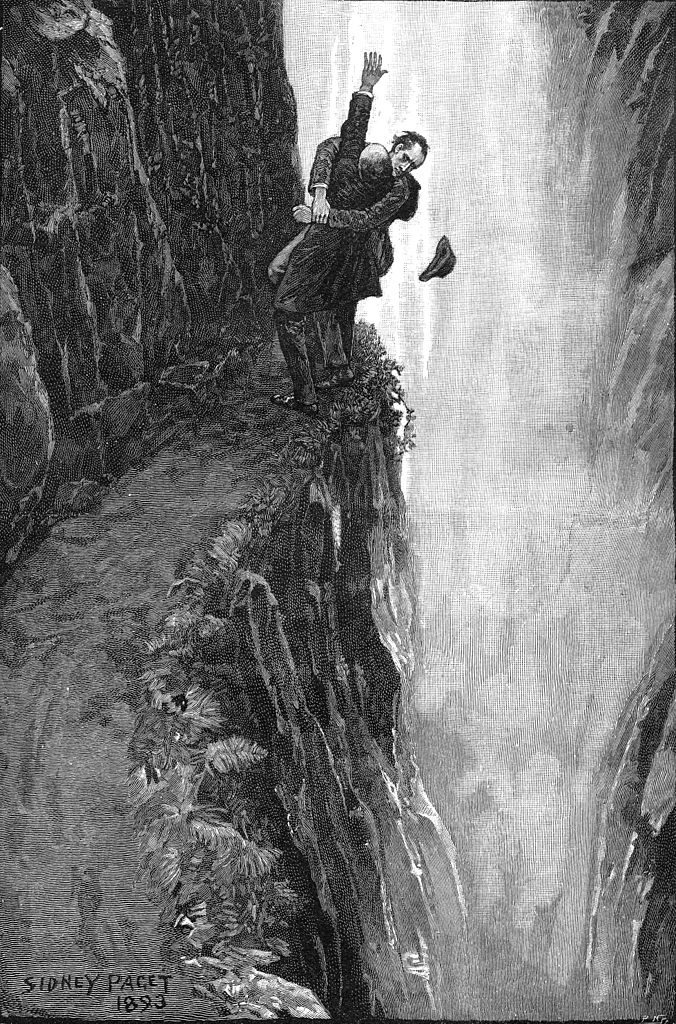- Originally published on the Bartitsu.org site on Friday, 15th October 2010
In early 1902, and under circumstances that remain a historical mystery, the Bartitsu Club closed its doors for the last time. Jiujitsu went on to experience a boom lasting even through the First World War, firmly establishing the mystique of the Japanese martial arts in Western pop culture. The popularity of boxing and wrestling continued unabated. Some individuals, notably Pierre Vigny, Percy Longhurst and Jean Joseph Renaud, perpetuated and expanded upon Barton-Wright’s practice of mixing Asian and European “antagonistics”. For almost all intents and purposes, however, Bartitsu itself was forgotten throughout the 20th century.
During this period, Sherlock Holmes aficionados continued to puzzle over Sir Arthur Conan Doyle’s reference to “baritsu, or the Japanese system of wrestling”, with which Sherlock Holmes had simultaneously saved his own life and defeated his arch-nemesis, Professor Moriarty, at the brink of Reichenbach Falls. Meanwhile, E.W. Barton-Wright was occasionally referenced in the introductory paragraphs of English judo manuals – as the famous Yukio Tani’s manager. Bartitsu, when it was mentioned at all, was typically described simply as “an English version of jiujitsu”.
And so the situation remained until the mid-1950s research of Ralph Judson, whose work has recently been re-discovered by Andy Stott.
Judson had studied jiujitsu under Japanese instructors for eight years in his capacity as the Commandant of the Manchester Sub-District Physical Training and Close Combat School during the Second World War. A longtime Sherlockian, he had quizzed his Japanese colleagues about Holmes’ “baritsu”, but was consistently told that no such term existed in the Japanese language:
For a long time I tried to discover the origins of the word baritsu, and the precise methods of this form of wrestling. Somebody must have invented it, some time.
After his retirement in 1955, Judson began the task of cataloging his collection of some 6,500 books, which included a number of antique 19th century periodicals. Leafing through the contents of the seventh volume of Pearson’s Magazine, dating to 1899, he was intrigued to find a series of two articles entitled The New Art of Self Defence, by one E.W. Barton-Wright:
In the second installment (Barton-Wright) wrote, “Readers of the March number will remember that I described therein a few of the three hundred methods of attack and counter-attack that comprise the New Art of Self Defence, to which I have given the name of BARTITSU.“
(emphasis in original text).
Thrilled to have finally tracked down the origins of Holmes’ mysterious art of “Japanese wrestling”, Judson learned what he could about Barton-Wright, Tani and the Bartitsu Club and offered his ground-breaking research in the form of an article. The Mystery of Baritsu: a Sidelight Upon Sherlock Holmes’s Accomplishments was published in the Christmas 1958 edition of the Baker Street Journal.
Judson’s summary of the Bartitsu story was largely accurate, although, like many prior and subsequent writers, he apparently missed the significance of Bartitsu as an eclectic self defence art, describing it as “a number of selected methods of ju-jutsu, adapted to European needs and costume”. It’s entirely possible that Judson simply didn’t read, or failed to connect Barton-Wright’s second series of Pearson’s articles (on walking stick defence) to his first, and so did not realise that Bartitsu actually encompassed four different methods of “antagonistics”.
Shifting gears into the Sherlockian “Great Game” of pretending that Holmes and Watson had been real people, Judson pointed out that Holmes could not possibly have studied Bartitsu, because the events described in The Adventure of the Empty House took place on May 4th, 1891. Since Bartitsu was not introduced until 1899, he reasoned, Holmes must in fact have referred to jiujitsu, and Watson (writing in 1903) must have simply confused jiujitsu with the then-popular Bartitsu, further confounding future generations of scholars by misspelling the word. (1)
Ralph Judson finished his article by offering an ingenious technical explanation as to how Holmes had defeated Moriarty at Reichenbach Falls. Noting that the observation path where they battled is only three feet wide, with a sheer wall of rock to one side and a sheer drop on the other, Judson suggested that:

Just before Professor Moriarty locked his grip, pinning the detective’s arms to his sides, Sherlock Holmes, having inflated to the full extent his chest and his biceps, swiftly deflated himself, and, as he said, “I slipped through his grip”. In one fast and smooth movement, dropping on one knee, he gripped with one hand Moriarty’s heel, which was closer to the abyss, and lifting the heel and with it the foot, diagonally, away from himself, he pushed hard, at the same time, with his other hand, into the groin of the captured leg, applying terrific leverage …
This caused Moriarty to lose completely his balance and gave him no time to clutch at his opponent. When Holmes let go, Moriarty “with a horrible scream, kicked madly for a few seconds and clawed the air with both his hands.”
But, for all these efforts, Moriarty could not regain his balance, and over he went – while his opponent was still crouching on the narrow path.
This is the complete picture of this unforgettable conflict – and “Baritsu” is no longer a mystery.
Ironically, though, Judson’s Mystery of Baritsu article was, itself, largely forgotten over time …
(1) A more recent theory is that the art known as baritsu was in fact founded by Holmes himself, based on his documented study of Japanese wrestling, fencing, boxing and stick fighting, and that he later gave permission to his top student, E.W. Barton-Wright, to go public with a modified version of the art.
By far the most detailed version of these events, though, is discussed here.

